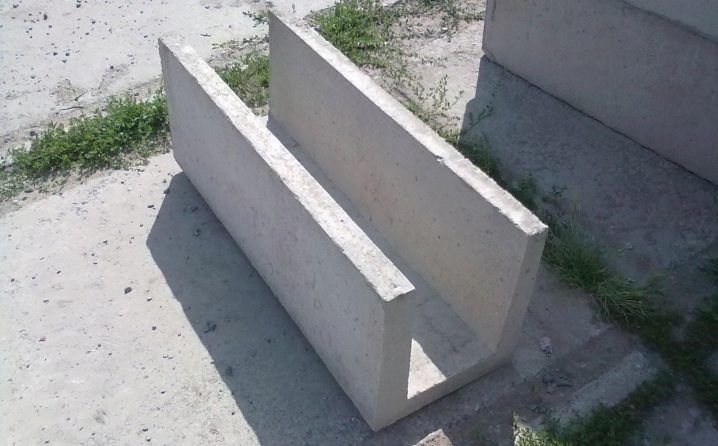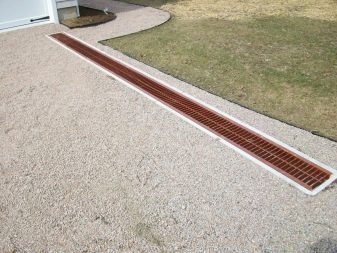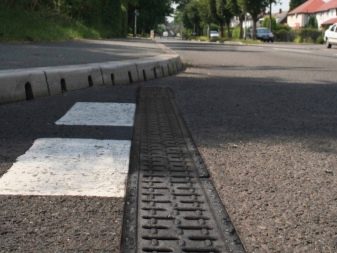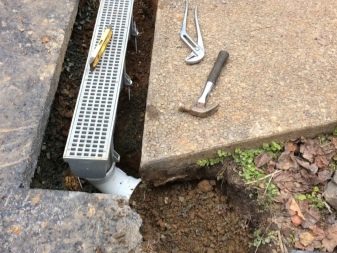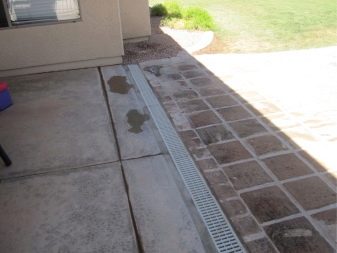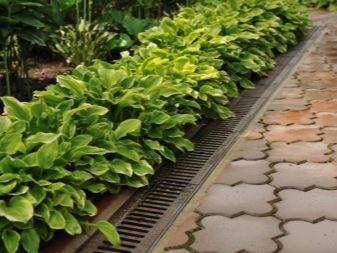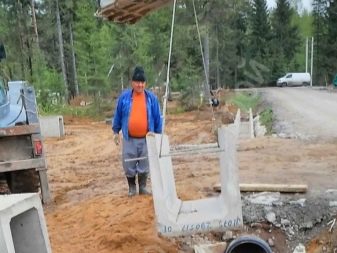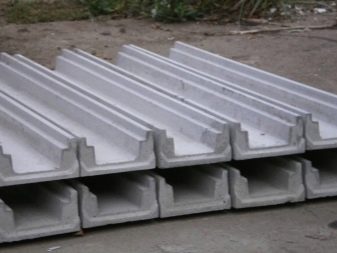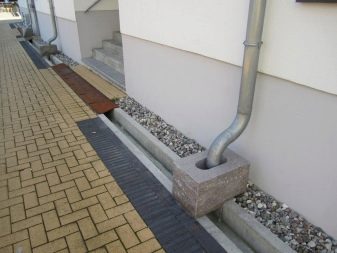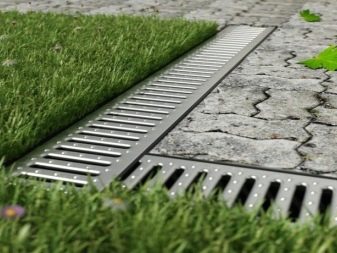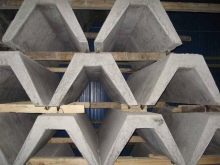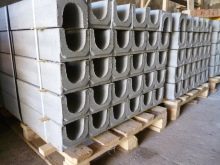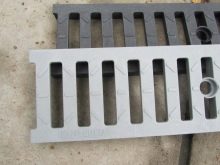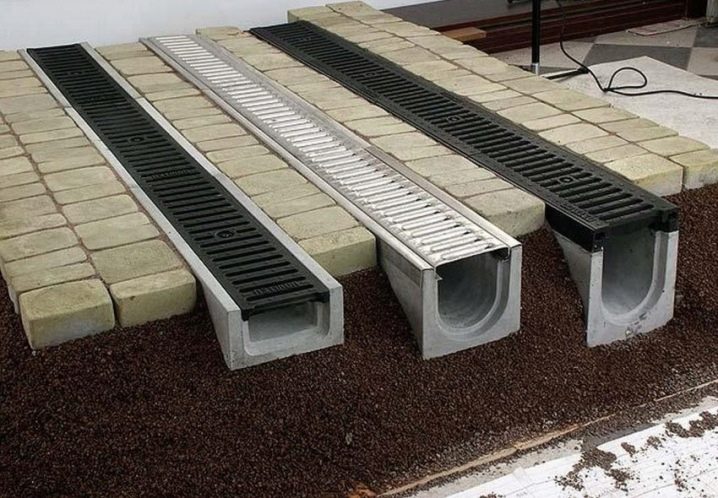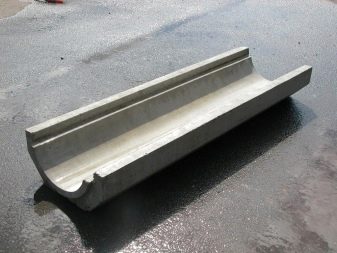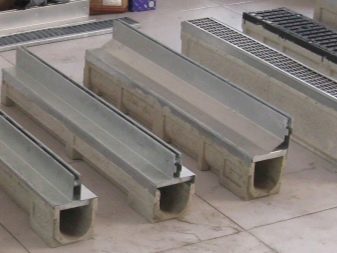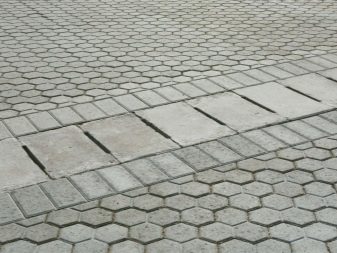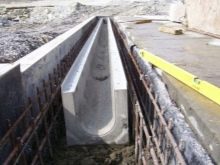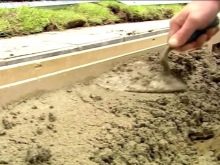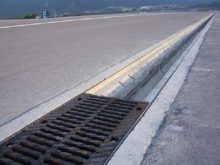Drainage concrete trays: technical characteristics and installation methods
Concrete structures and products are commonly used in the construction of various buildings and landscaping. The material has many advantages, thanks to which external devices, operated in direct contact with water, also prefer to make from this raw material. These products include drainage trays.
Design features
Residential buildings and structures of general purpose for effective functioning require a certain communication, both internal and external, which solves questions concerning the improvement of the territory under the influence of environmental factors. One of these tasks is to divert rain or melt water, which causes a lot of inconvenience to people, as well as to various types of equipment and structures.The accumulated moisture must be promptly brought to the sewage system or to places where it will not serve as an obstacle and will not be able to damage structures and objects.
For such purposes, special systems for the drainage of water are widely used, due to which excess water enters the drainpipes. The main element of the design is a drainage tray, which is often made of concrete. It is additionally equipped with various covers and grids. Such additional elements provide protection from pollution by debris and foliage.
Trays can be with a grid made of different raw materials. The selection of an acceptable material is made on the basis of the field of operation of the water intake and the degree of mechanical load. Installation of gratings is carried out using special screws, as in some cases periodic cleaning of products is required. The tray is an oblong container of square, rectangular or rounded shape.
For the manufacture of structures used different grades of fiber-reinforced concrete. All types of drainage trays are manufactured in accordance with GOST. The specificity of the preparation of the working solution involves the introduction into the mixture of small polypropylene fibers, due to which it is possible to minimize shrinkage of the product and increase the resistance to deformation. In addition to the fibers, a metal fiber is sometimes added to the solution.
Some manufacturers offer concrete products for the manufacture of which is used cement M500. In this case, the trays are reinforced with reinforcement.
Purpose
As a rule, the scope of use of products involves the construction of storm sewers near residential buildings or industrial facilities. Each type of trays is endowed with certain characteristics, based on which the degree of load on it is determined. As a result of errors in the calculations, situations are possible when the product simply does not cope with the loads and breaks. To exclude the occurrence of such situations, it is necessary to carefully approach the choice of trays for drainage.
In a complete set with a blind area and drainage, the trays provide reliable protection of buildings against sewage; the carrying capacity of products allows to increase the operational life of roads, sidewalks and other surfaces.
The following main areas of operation of concrete sewer trays can be distinguished:
- streets and pedestrian pavements, which are covered with asphalt or paving tiles;
- various types of sites made of concrete, for example, sports purposes, in airdrome areas, military facilities, car parks or gas stations, marine stations;
- the trays are located in large public spaces or in areas located at enterprises, for example, in shops for internal purposes;
- near different buildings infrastructure of the city;
- In addition, VBL used for laying cables and heating systems.
Advantages and disadvantages
Drainage trays of concrete have a number of positive features, namely:
- the properties of raw materials to resist corrosion, have a positive effect on the operational life of products, which is estimated to be several decades;
- road chutes have a high level of resistance to negative temperatures, as well as sharp fluctuations in thermometer readings. This feature makes it possible to operate the products in absolutely any conditions and in any climatic zone;
- the structure of concrete, which has additional reinforcement with metal, ensures the strength of the product;
- despite the small size of the construction with the lattice have an impressive weight, which ensures the stability of the product even in case of precipitation exceeding the average, which will lead to a rise in the level of wastewater in the system;
- the material is absolutely safe for human health and does not harm the environment, because it contains only natural ingredients;
- drainage trays are easy to install, in addition, they have a simple configuration, so practical to use. Products do not need any specific care; it is enough to regularly clean the drainage grate from accumulated debris;
- all types of concrete structures have an affordable price.
As with any building construction, drainage trays have drawbacks. Some experts attribute a large mass to the minuses of products, which sometimes makes it difficult to transport products to the installation site.
However, the modern possibilities of delivery of goods and products for different purposes can easily cope with this task.
Species
Taking into account the production method of drainage concrete trays, They are divided into two groups such as:
- products, the production process which is carried out by the method of vibratory casting. This method involves the compaction of raw materials by vibration;
- products manufactured by vibropressing. This option provides compaction using a special press. Troughs released using this technology do not have air bubbles inside, which eliminates the risk of the formation of internal material splits.
In addition, there is the following classification of products:
- VBL drainage - the main purpose of which is the collection and removal of groundwater;
- sewer structures - With the help of such products is the sewage;
- roadside hatches - set such products for the device gutters along the roadway and roads;
- stormwater VBL - they are used to remove water from the site.
Drainage trays are reinforced concrete or polymer concrete products of an open section. Given the shape, such designs may be as follows:
- in the form of a trapezoid;
- U-shaped as a rectangle in the section;
- U-shaped as a semicircle in cross section.
On the basis of constructive products, they can be divided into such types as:
- ordinary channels;
- the products having plum of vertical type.
The complete set of drainage concrete trays allows to distinguish the following types of products:
- structures with cast iron grilles, which in some cases may have a galvanized base;
- trays with steel gratings. Stainless steel is used for such products;
- VBL with plastic grids. Only highly durable types of raw materials are used as raw materials.
Proceeding from the type of the grids for the trays themselves, trays with a slot-like cast-iron grating or products with grids of the cellular type are distinguished. The first option is recommended for installation in places where heavy loads on the structure are excluded. Trays for water disposal are with an internal bias, ensuring the discharge of water or without it. In addition, there is another classification of products.
- Bait Products are the most demanded products for water disposal. They are used for installation on highways and road junctions, where the curb is combined with the roadway.A feature of their location is the installation on the same level with the highway. Such designs are stacked only by hand, and also involve a certain preparatory process prior to installation. The technology of preliminary preparation includes the arrangement of the place for mounting the tray with the laying of insulating material, after which the installation of the tray itself is carried out.
- Telescopic VBL. A distinctive feature of such products is the type of feedstock used for production. In such cases, the work uses strong and heavy types of concrete compositions, which are characterized by resistance to temperature fluctuations. In addition, in the manufacture of products additionally included in the composition of core reinforcement, which plays the role of the frame. Metal undergoes special treatment, eliminating the risk of rust and corrosion. The scope of operation of telescopic drainage trays is the work on the construction of tunnels and bridges. Sometimes they are used in private construction for arranging linear water diversion.
Sizes and volumes of products may be different.The standard length of the trays is 1 meter, but based on the width and weight, this value can be large. The width of structures varies from 0.14 to 4 m, with a height of from 0.06 to 1.68 m. With regard to the volume of trays, it is worthwhile to distinguish structures with a value of this parameter ranging from 0.07 to 0.3 m³.
There are also small-sized trays, which are used for shallow mounting. Their installation can be done by hand.
Tray elements of drainage are made in accordance with European standards, which assign specific labeling to products, taking into account the type of construction, the maximum load on the product and operating conditions. Based on the maximum mass of the load acting on the tray, the following types of products are distinguished:
- class A15 - designed for the largest weight of 1.5 tons;
- class B125 - where the set maximum value is 12.5 tons;
- class S250 - in this group the maximum weight is 25 tons;
- class D400 - in this case, 40 tons is considered the greatest load;
- E600 and F900 - the maximum load values of 60 and 90 tons are assigned.
The latter version includes such two groups of products as:
- standard trays used for mounting on walkways and highways;
- reinforced structures that can be used on high-loadable coatings, for example, on airfields or in industrial workshops.
Installation steps
Before proceeding to the installation of drainage concrete trays, it is necessary to prepare the relevant documentation, which will contain information about the location of drainage systems, as well as information about their configuration. Works on installation of channels for drainage include the following steps:
- trench preparation is performed first. Its size must exceed the dimensions of the structure that will be placed in it. The soil in the recess should be carefully tamped, so that the soil has acquired a good density;
- further, sand is poured into the trench;
- a concrete pad is formed on top of the sand layer. She settles in order to play the role of support for the drainage tray;
- With the help of special lifting equipment, the structure is lowered into the trench.A layer of concrete will allow you to securely fix the tray, which will exclude its displacement under load during operation;
- after laying the gutter is necessary to strengthen it with a solution of concrete on the sides;
- in order to secure the products with each other, they are fastened with special grooves, and a sealant is used for processing the joints. Acrylic or bitumen products are suitable for such purposes;
- gratings are installed on top of the structure, and the water drainage system is connected to the storm sewer;
- most often at the end of the formed system equip the trash box.
A very important point when installing the grille is the level of its location. It must be at least 5 mm below the road base. An important factor is also considered to be the corresponding slope to the well or another type of receiver for water. Installation of the drainage system can be performed on an existing coating or on a newly created one.
When installing the structure on the finished coating with its insufficient thickness, work is carried out to build up the concrete layer.
The process of installation of concrete drainage trays, see the following video.

